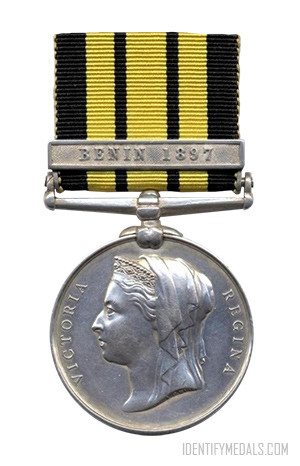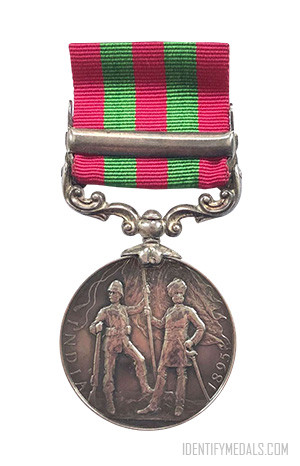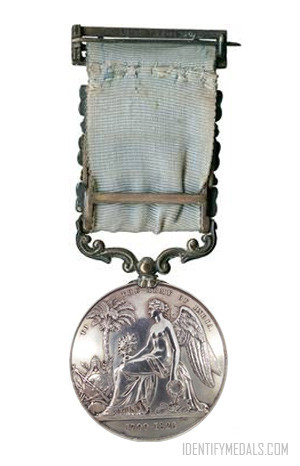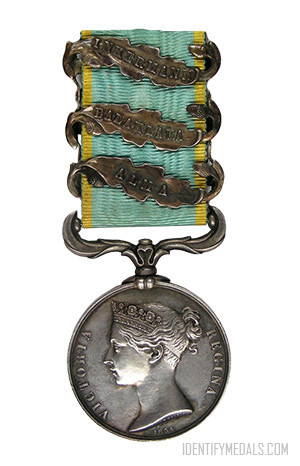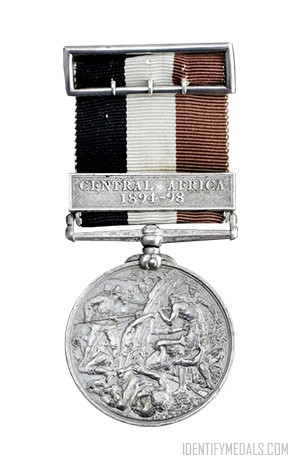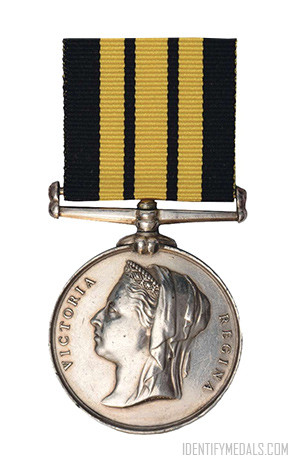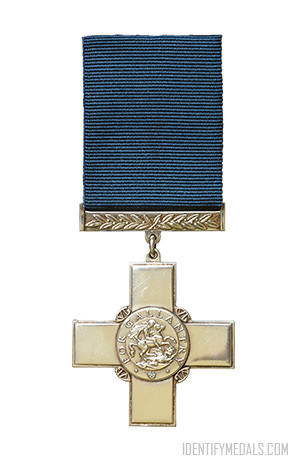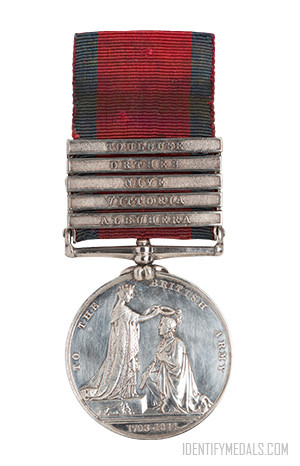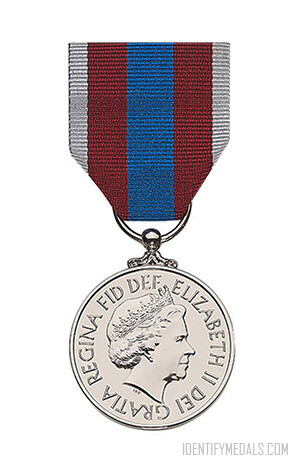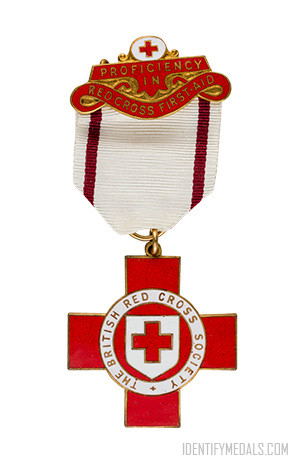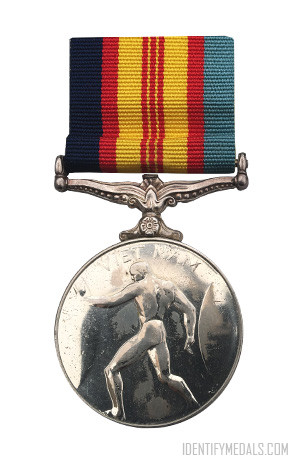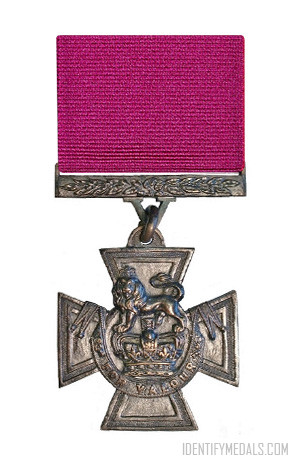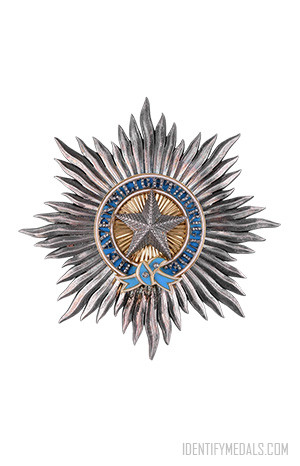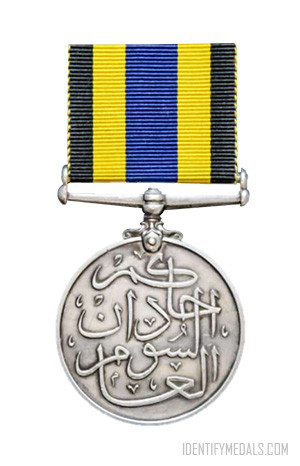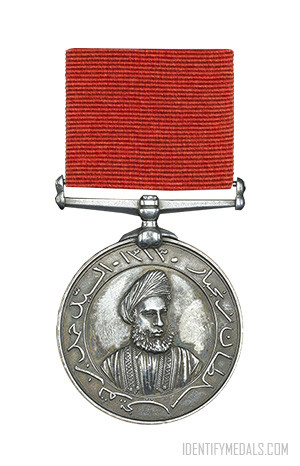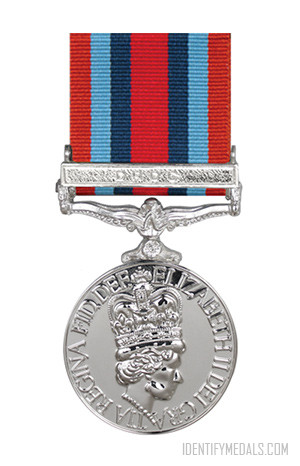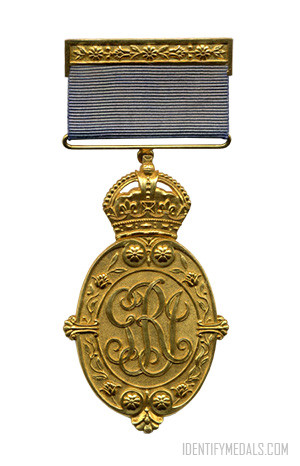- Time Period: Pre-WW1
- Year of Institution: 1892
- Country: Great Britain
The East and West Africa Medal was a campaign medal awarded for minor campaigns that took place in East and West Africa between 1887. The medal was established in 1892, and a total of twenty one clasps were issued. Most medals were granted to personnel from either the Royal Navy, the West India Regiment or British led local forces, including locally recruited police.
Awards of the medal covered punitive expeditions against local tribesmen, generally in response to attacks against Europeans or neighboring tribes, or for operations to suppress slavery.
A total of 21 clasps were awarded. Those who qualified for a second or subsequent clasp received the new clasp only to be attached to their existing medal. While the majority of recipients only qualified for one clasp, medals have been seen with as many as seven.
The East and West Africa Medal Design
The East and West Africa was designed by Sir Edward Poynter.
The obverse bears a left-facing portrait of Queen Victoria with the inscription “VICTORIA REGINA”. The reverse has an image of British soldiers fighting Africans in dense jungle.
The medal was issued in silver to officers and men of the British led forces. It was also awarded in bronze to native porters with some clasps. The ribbon measures 31.7 millimeters (1.25 in) wide and is yellow with black edges and two black stripes towards the center.

